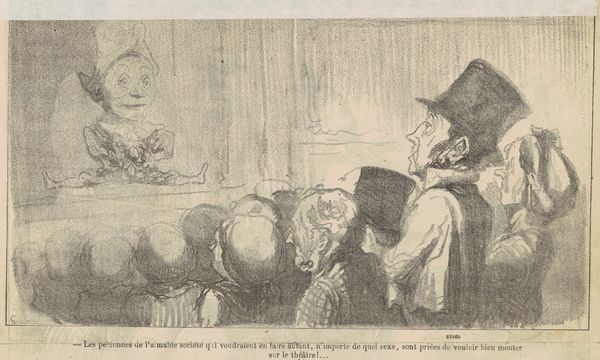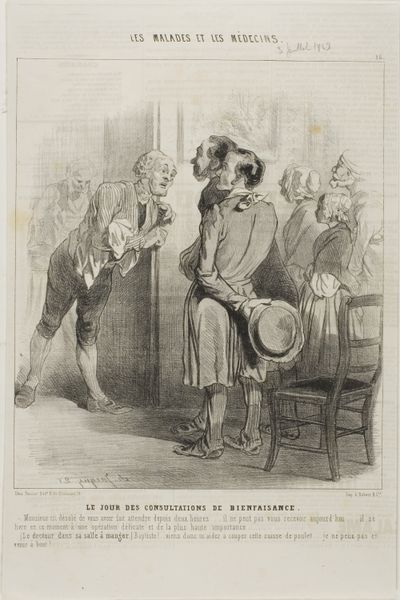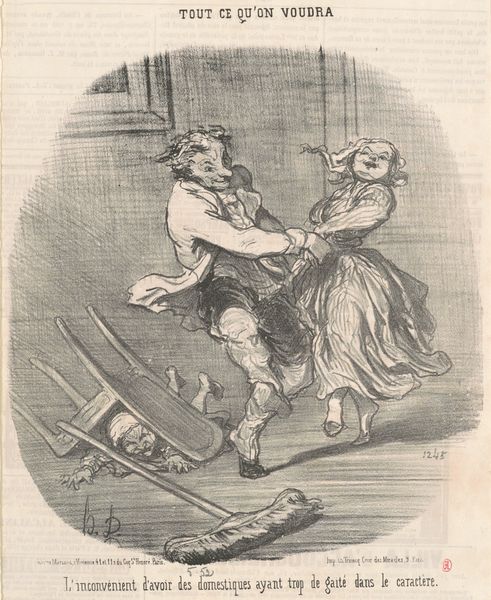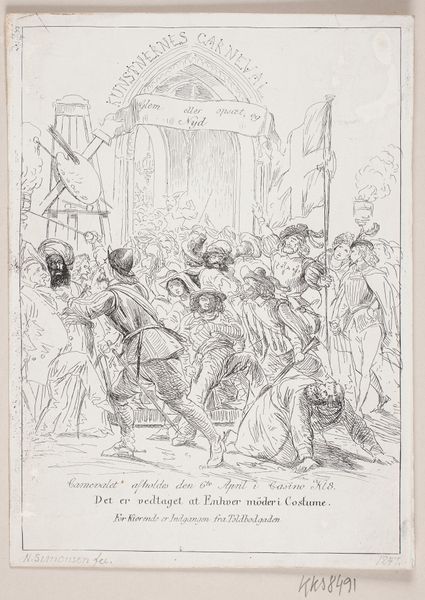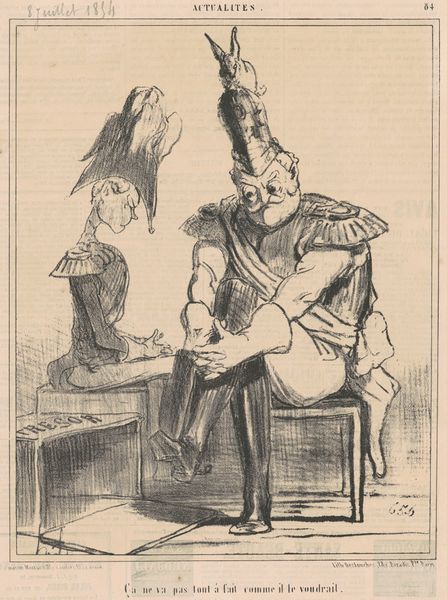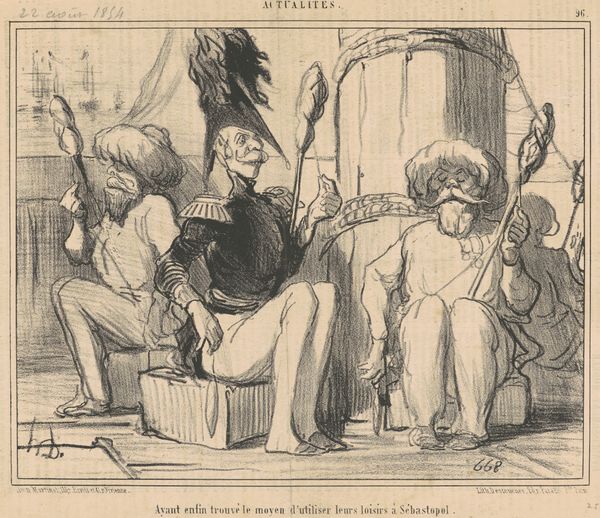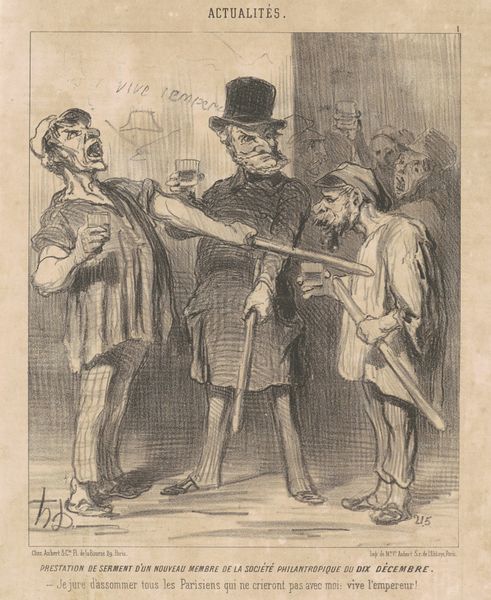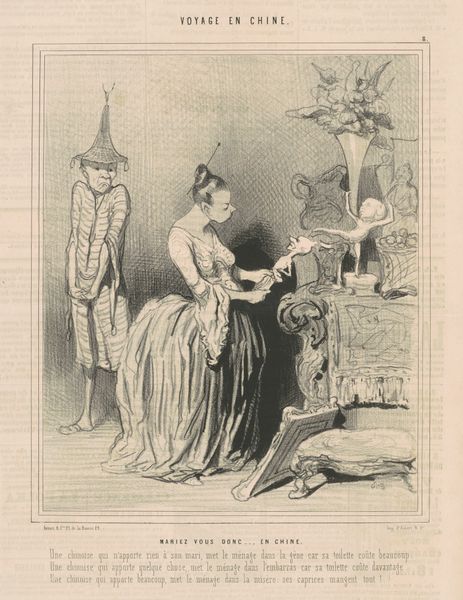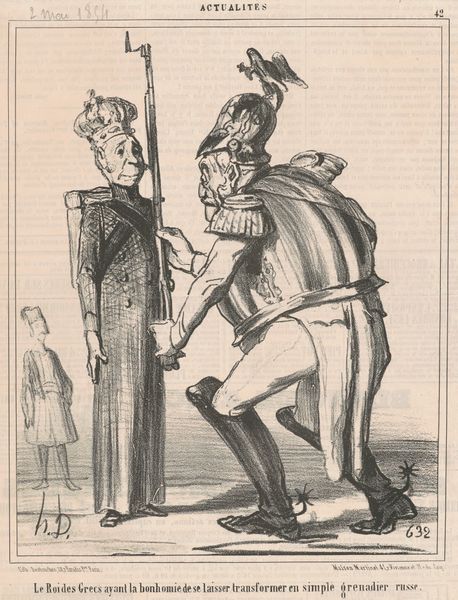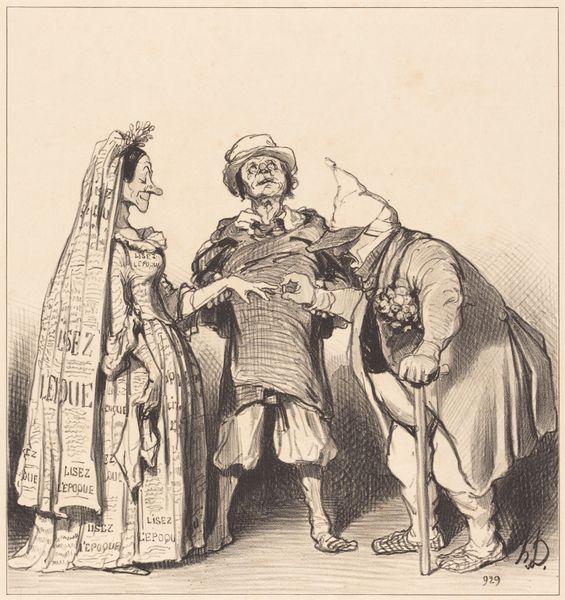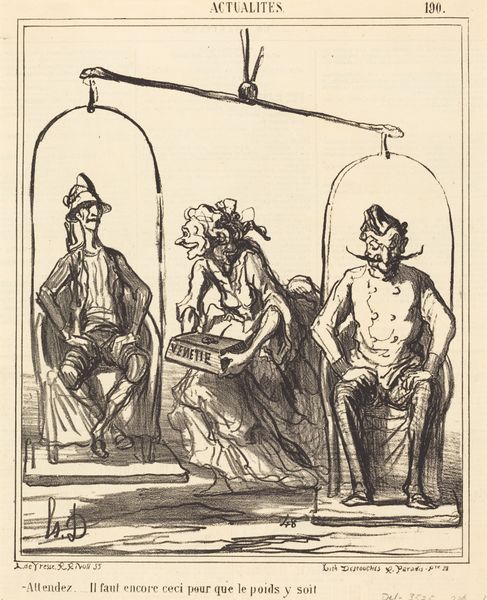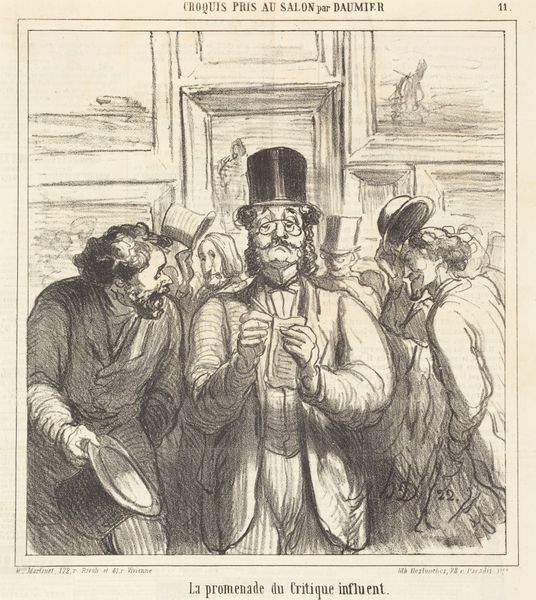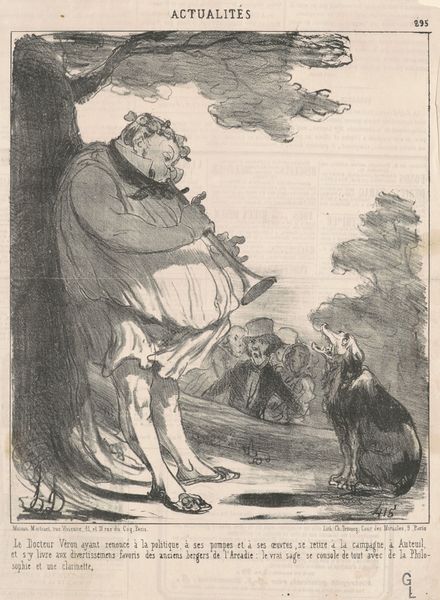
drawing, lithograph, print
#
drawing
#
lithograph
# print
#
caricature
#
romanticism
#
genre-painting
Copyright: National Gallery of Art: CC0 1.0
Editor: This is Honoré Daumier's lithograph, "Le Gamin de Paris aux Tuileries," from around the 19th century. It depicts a scene with figures in period clothing; there's a sense of theatricality or role-playing happening, almost farcical in its mood. What do you see happening here in terms of its socio-political implications? Curator: It’s tempting to read this as a satire of power, particularly when you consider the tumultuous political landscape of 19th-century France. This lithograph reflects Daumier’s characteristic style of using caricature to critique social and political structures. Editor: So, it’s not just a humorous scene, but a commentary? Curator: Exactly. Notice the title, which places the "Gamin de Paris" – a street urchin or a common Parisian – in the Tuileries Palace, once a royal residence. The text below adds to this effect; "Cristi!...comme on s'enfonce la dedans," meaning “Christ!... how deep we sink into this,” could satirically reference how readily people adapt to decadence, even in times of social crisis. Where do you think Daumier’s lithographs were being consumed? Editor: Given the satirical bent, probably not in royal circles! More likely in newspapers and pamphlets for a wider public? Curator: Precisely. This highlights the power of print media in shaping public opinion. Daumier utilized this to make statements, turning everyday imagery into potent symbols of socio-political dynamics. It prompts us to consider who is consuming the imagery and what political and social messages they’re internalizing from the artwork. What's your take-away from it? Editor: It shows how artists could, and did, use popular art forms to participate in and shape public discourse, something I hadn’t fully appreciated. Thanks for illuminating that context. Curator: It also highlights the importance of critically examining the institutions that give art its platform and shape its narrative. Understanding the social context breathes further significance into an image we could dismiss as a comedic moment.
Comments
No comments
Be the first to comment and join the conversation on the ultimate creative platform.
